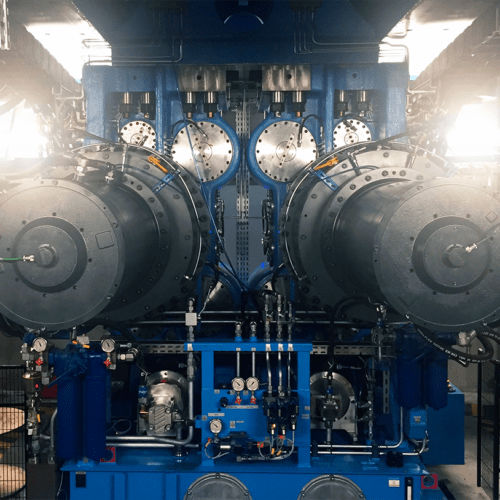All deep-drawing dies need a holding force to be able to draw without creating creases and wrinkles. This retention force can be achieved by the use of double-acting presses (although such products are now rarely used and widely discontinued) or by pressure cylinder systems incorporated into the die or by cushions in the bed. Initially the cushions in the bed were pneumatic, but the necessary technological evolution helped us to develop the hydraulic bed cushion back in 1990, and the servo-mechanical cushion in 2017.
Although FAGOR ARRASATE can still manufacture double-acting presses and pneumatic cushions for drawing, these are rarely used and, thus, are not listed in our product range. Anyway, should you require information about this kind of products do not hesitate to get in touch.
TECHNICAL SPECIFICATIONS
The main advantages of the hydraulic cushion over air cushions or pressure cylinders are as follows:
Different programmable forces can be exerted during drawing by controlling the retention of the material in an appropriate way.
The option of controlled descent or pre-acceleration, in order to reduce the sudden shock that occurs when the slide hits the cushion and to avoid vibrations that are harmful to both the part and the installation.
The option to lock the cushion (either in its PMI or during ascent) to improve the quality of the piece and aid picking-up the piece by the automation.
Damping at the end of the upward stroke of the cushion to avoid hard stopping of the cushion and, thus, vibrations.
One of the aspects of the hydraulic cushion that can be improved is the reduction of energy consumption.
Taking the standard hydraulic cushion as a reference,









